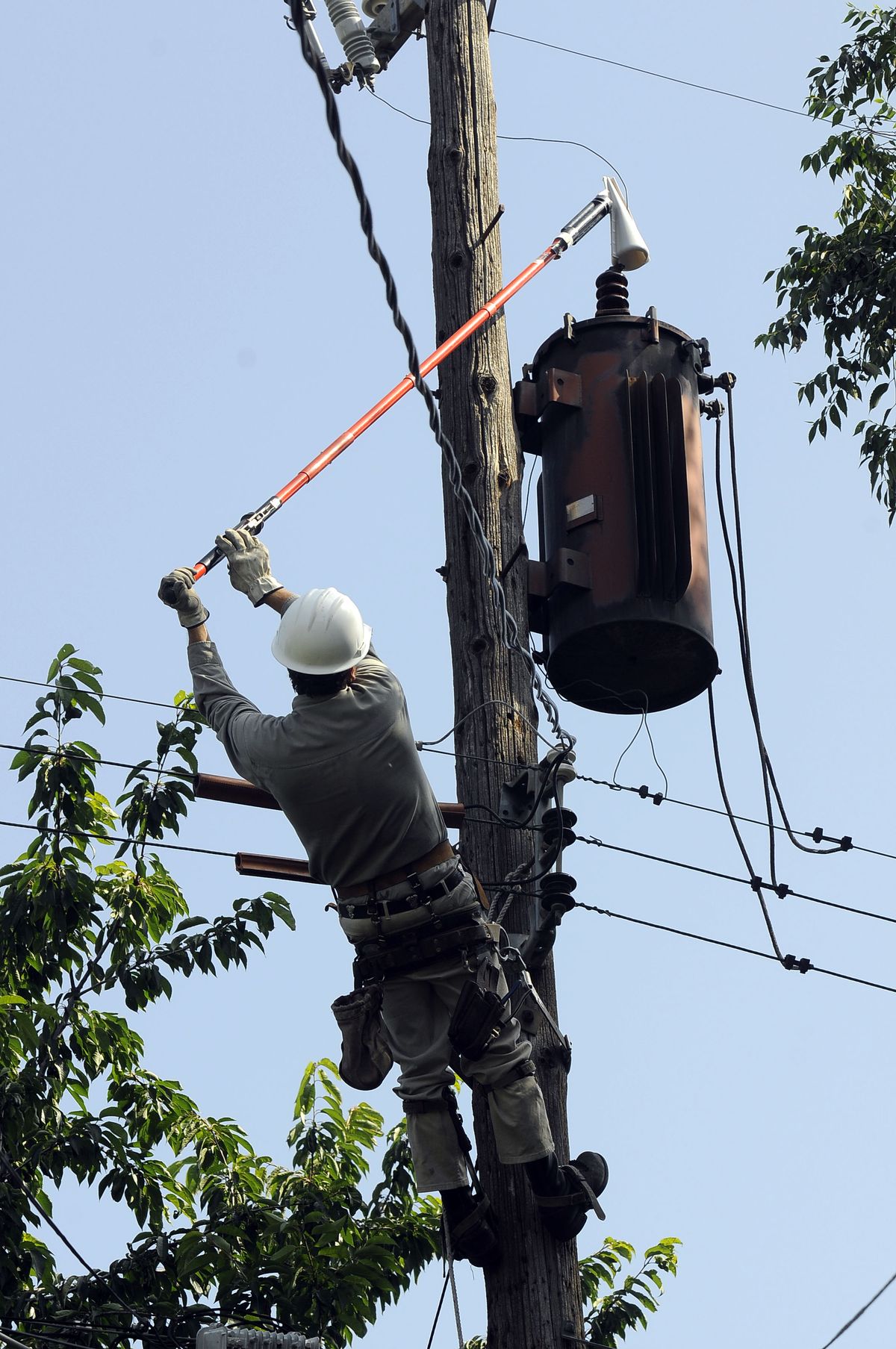Avista rewards work well done
$2.3 million in bonuses paid to 1,400 workers last year

Avista Corp.’s rank-and-file workers collected $2.3 million in bonuses last year through a program that rewards employees for meeting company goals.
Avista’s 1,400 workers get yearly incentives when they hit targets for customer satisfaction, cost savings and reliability. Over the past five years, Avista employees earned $16 million in bonuses through the program, which is paid for by ratepayers, according to the Washington Utilities and Transportation Commission.
Avista officials say the incentive program spurs innovation and creative thinking at the Spokane-based utility, which serves more than 650,000 electric and natural gas customers in the Inland Northwest and southern Oregon. One of the program’s more memorable legacies is the installation of squirrel guards, said Jessie Wuerst, an Avista spokeswoman.
The company’s operations staff realized that animal-caused outages were on the upswing. Squirrels were a particular culprit. To keep the rodents from chewing electrical equipment, Avista started installing cone-shaped plastic guards over electric lines’ connections to transformers.
The guards significantly cut down on outages, Wuerst said. A Moscow-Pullman feeder line that once averaged 27 animal-caused outages a year has dropped to two annually, she said. Avista anticipates installing the guards on 80 percent to 90 percent of its system.
The incentive program “really engages the organization in how we are doing, and what we can do better,” said Karen Feltes, Avista’s senior vice president for human resources.
Incentive pay programs are fairly common in the industry, said Amanda Maxwell, a spokeswoman for the Washington Utility and Transportation Commission. The commission, which regulates utility rates, allows them as long as the programs provide benefits for ratepayers, she said. However, the commission doesn’t allow incentive programs geared toward boosting corporate earnings to be included in rates, because those programs benefit shareholders, she said.
In 2008, each Avista employee took home an average of almost $1,700 in incentives. However, the amount varies by department. Last year, Avista’s call center employees earned an average of $984 in incentives.
Although ratepayers pay for the bonuses, Wuerst said the cost of the incentive payout is recovered through efficiency gains and cost savings.
Seventy-five percent of the possible bonus that employees can accrue depends on Avista lowering its per-customer service costs during the prior year, Wuerst said.
Another 15 percent of the bonus is tied to customer satisfaction ratings. Avista must receive ratings of 90 percent or above, as measured by an independent firm, for employees to qualify.
The final 10 percent is tied to the utility’s reliability of service, including the number and length of power outages. Extraordinary events, such as outages caused by severe weather, are not included, Wuerst said.
Employee incentive payments have been part of Avista’s compensation plan for many years, Feltes said. In 2002, the incentive program was revamped, with more focus on lowering per-customer costs.
The $2.3 million paid to Avista’s 1,400 workers does not include bonuses paid to Avista Chairman and CEO Scott Morris and 13 other top company executives in 2008.
They earned $1.3 million through a combination of the incentive plan and a shareholder-funded plan, which pays bonuses based on the performance of Avista’s stock.